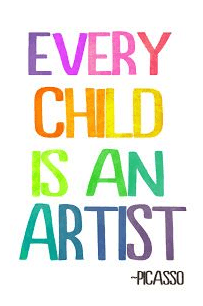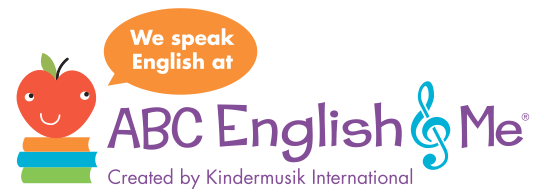
Every May 18th marks International Museum Day. As a community of early childhood educators and families, we know—as Pablo Picasso pointed out—“All children are artists. The problem is how to remain an artist once they grow up.” Introducing children to new experiences, such as various genres of music or art, can be one of the ways to help them hold onto their artistic and creative side…and reminding all of us grownups about our own creative side!
While in our Kindermusik classes for babies, toddlers, big kids, and families, we introduce children to a variety of musical styles from around the world, a trip to a local museum can show children the various contributions found in the art world. However, for those not able to travel to a museum, we put together 6 educational activities for kids that help celebrate International Museum Day at home or at school.
6 ways to celebrate International Museum Day with young children
- Visit the Musical Instrument Museum for a virtual listening tour. Go on a listening tour of featured instruments found at the only museum dedicated to global instruments. From the Octobasse to the Cajun Accordion and metal clarinet to the differences between the Irish Bouzouki and the Greek Bouzouki, children (and adults) will enjoy discovering new musical instruments!
- Plan a virtual visit to one of the world’s most famous museums. Choose from The Louvre in Paris, The Frick Collection in New York, or The British Museum in London. These museums house some of the most-loved and well-known masterpieces.
- Take a virtual self-guided tour of the Smithsonian National Museum of Natural History. Children find art in the smallest details, including a ladybug on a leaf, dewdrops, or a rainbow after a storm. This museum is dedicated to inspiring curiosity, discovery, and learning about the natural world.
- Create a museum in your home or classroom. Set aside one room or area in your house or early childhood classroom to display children’s creations. Invite family members and friends to come over for a tour.
- Create art! Need inspiration? Here’s a collection of art projects and crafts for
 young children from Kindermusik@Home, using their hands as shapes, tools, and mementos.
young children from Kindermusik@Home, using their hands as shapes, tools, and mementos. - Read children’s picture books together and celebrate the art of illustration. Visit your local library or download the Reading Rainbow app, featuring hundreds of books and videos, including new music-themed content by Kindermusik.
Contributed by Lisa Camino Rowell, who plans to celebrate International Museum Day by creating handprint art with her two girls.



 wardrobe changes young children typically encounter each day, you can pick more than one cute green outfit!
wardrobe changes young children typically encounter each day, you can pick more than one cute green outfit!

















